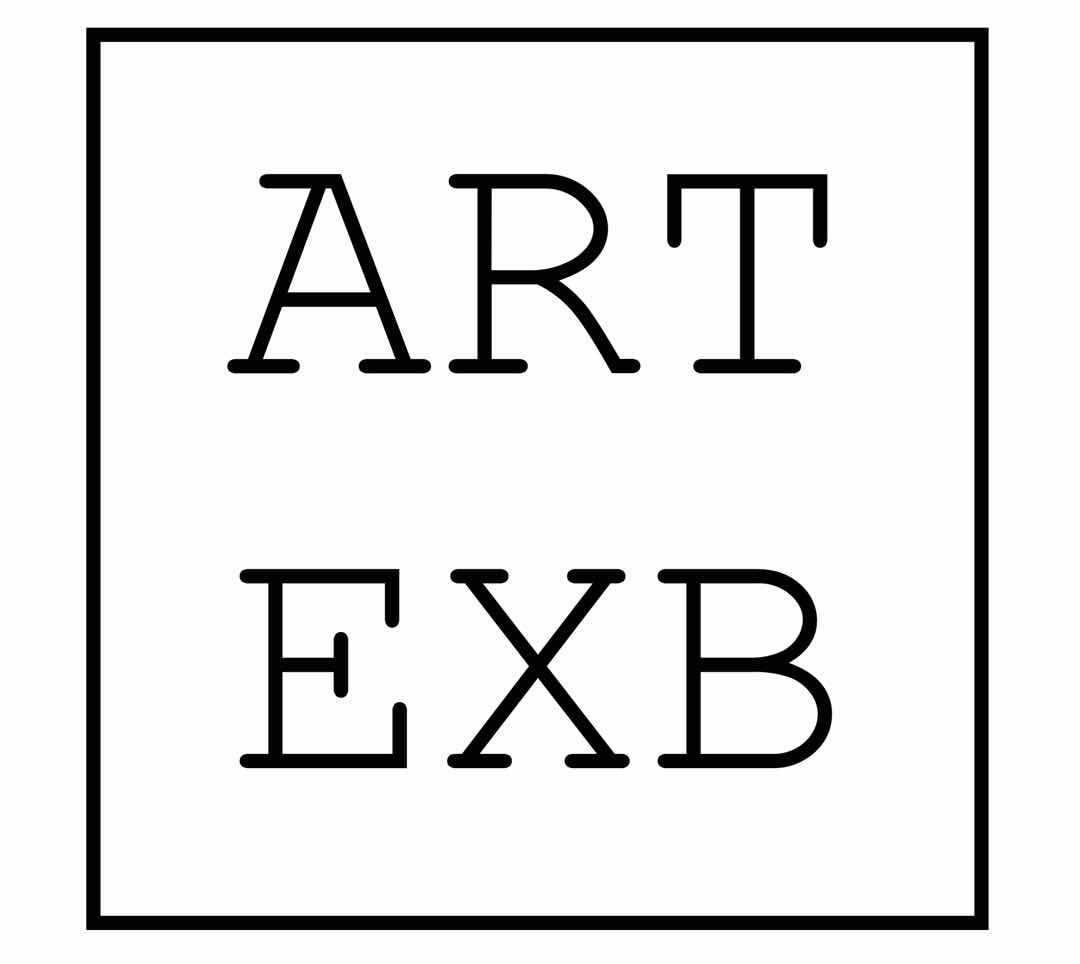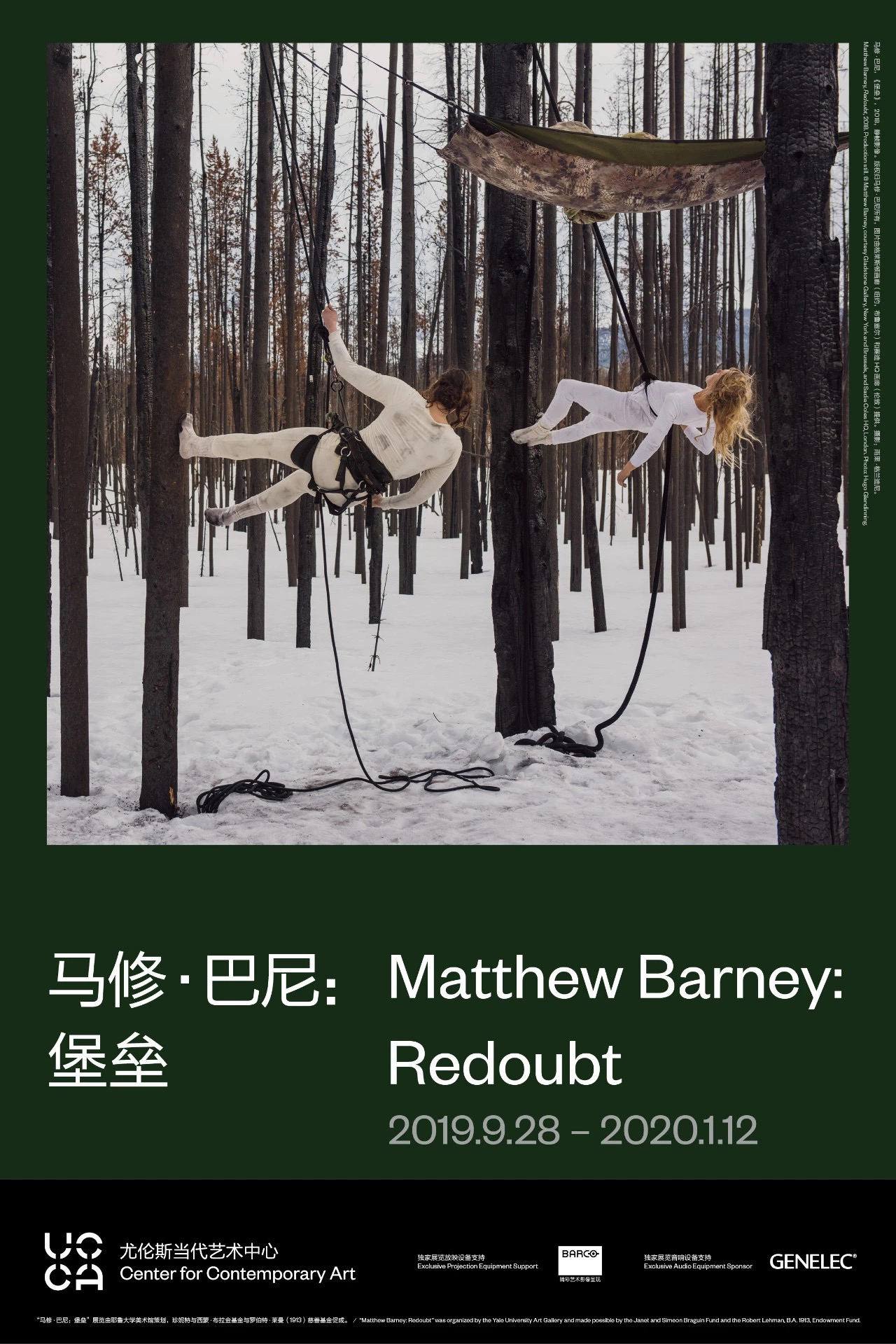UCCA尤伦斯当代艺术中心于2019年9月28日至2020年1月12日期间,呈现 “马修·巴尼:堡垒”,展出美国当代艺术家马修·巴尼2016至2019年间所创作的最新系列作品,该展览也是艺术家在中国的首次个展。本次展览将呈现一部时长两小时的同名影像作品,影片围绕着发生在美国爱达荷州锯齿山脉狩狼的故事,交织展现了与狩猎相关的神话传说和艺术创作。同时,亦将展出与影片相关的5件巨型雕塑、50余件雕版与电镀红铜版作品,以及艺术家参与创作的展览作品图录。展览“马修·巴尼:堡垒”首先于2019年3月1日至6月16日期间在耶鲁大学美术馆呈现,并在UCCA的展览结束之后于伦敦海沃德画廊呈现。
此次展览的新作延续了艺术家过去十年间在创作媒介上的显著转变——从早期作品中使用的塑料与凡士林,到《重生之河》中别具一格的铸造金属。巴尼将传统铸造工艺与全新电子科技,以及一系列前所未有的科技相结合,创作出兼具形式与媒介复杂性和叙事密度的艺术作品。例如,展览中的5件巨型雕塑便由从锯齿山脉被烧毁森林里获得的树木演化而来。艺术家将熔化的红铜与黄铜浇灌于树木内,任其在树干中流淌,创造出展现树木内部核心的独特金属铸品,而这每一件将树木残存部分融入其内的雕塑均成为了记录爱达荷州面貌的真实痕迹。在本次展出的5件雕塑作品中,亦包含一件艺术家为UCCA建筑空间特别定制,此前从未展出过的雕塑作品。
展览同时还囊括了巴尼在拍摄影片《堡垒》时制作的铜版作品,以及一系列描绘电影中意象(如锯齿山脉风景或林中时隐时现的狼)的电镀铜浮雕。电镀红铜版作品是以艺术家在电影制作过程中开创,之后又在工作室内进行拓展与精炼的工艺手法创作。在运用这一极具实验性的创作工艺时,艺术家先将图像雕刻在表面覆以沥青的铜版之上,接着将铜版浸泡在酸性电镀铜溶液中,并使之接收电流;这一过程使雕刻线条的边缘形成一层铜金属,而之前刻画的图像也得以在铜版上呈现。通过改变电镀槽内的电流、热量、化学成分浓度等条件,艺术家对每一幅画面都进行了独一无二的转化。电镀槽中最长的铜版上新形成的铜金属覆盖雕刻于铜版之上的图画,将雕版画转化成为原有图像几乎被完全掩盖的抽象浮雕艺术品。
《堡垒》拍摄于爱达荷州崎岖的锯齿山脉中,并延续了巴尼长期以来对风景的关注。对于巴尼而言,风景既是他电影中的场景,也是主题。《堡垒》以古典神话、宇宙神话和美洲神话探讨人在自然界中的位置,构成一幅描绘爱达荷中部地区的复杂肖像。与巴尼之前创作的大多数电影一样,《堡垒》中没有对话;但与此前创作相比,巴尼在这部影片中实现了一个关键的转变:他在影片的叙事中更充分地融入舞蹈元素,让影片角色通过舞蹈进行交流。在整部电影中,角色的行动被编排成舞蹈动作,以此对与野生生物的相遇进行回应、暗示与诠释。埃莉诺·鲍尔曾与巴尼在《重生之河》中进行过合作,此次她为《堡垒》编舞,并与K. J. 霍姆斯、桑德拉·拉莫奇、劳拉·斯托克斯共同出演影片。所有的舞蹈段落均为外景拍摄,场景和动作之间的关系也是影片中反复出现的主题之一。 影片《堡垒》的结构以七个日夜间开展的六次狩猎为划分,沿用狩猎女神狄阿娜和猎人阿克泰翁的神话故事,故事中后者因不小心冒犯了女神而遭到惩罚。《堡垒》中的狄阿娜(阿涅特·瓦赫特饰演)是一名身处爱达荷严寒荒野中的现代神枪手,她既是自然的保护者又是侵略者。在她的侍从——召唤侍女(埃莉诺·鲍尔饰演)和追捕侍女(劳拉·斯托克斯饰演)的陪同下,狄阿娜穿越山区搜寻一匹行踪难觅的狼。雕刻师(马修·巴尼饰演)偶然在森林中发现三人,开始跟踪他们并偷偷以一系列铜版画记录其行踪。他把铜版带到远处内置有实验室的拖车上,电镀师(K. J. 霍姆斯)对它们进行电化学转换。在接近影片尾声的关键场景中,雕刻者遇到了第六个角色——一位正在附近城镇排练美洲原住民舞蹈的圈舞舞者(桑德拉·拉莫奇饰演)。随着影片情节推进至宇宙和陆地逆转的高潮时刻,舞者复杂的动作将她与时空中的其他角色联结在一起。 本次展览于1800平方米的UCCA大展厅,由UCCA与马修·巴尼工作室共同设计的空间内呈现。展览期间,影片《堡垒》每天将在UCCA为此次展览特别搭建的影院里按时展映。 巴尼是我们这个时代最具野心且令人兴奋的艺术家之一,他以《悬丝系列》(1994-2002)等史诗般的作品而闻名。影片《堡垒》以及收录了艺术史、舞蹈理论和环境研究领域内重要学者论文的相关出版物印证了艺术家广泛的兴趣。展览策展人、马萨诸塞州威廉姆斯学院美术馆馆长、耶鲁大学美术馆前高级副馆长及小西摩·H.诺克斯现当代艺术策展人帕米拉·弗兰克斯表示:“巴尼所参照的知识和美学框架非常广博,从古典神话到美国西部的民间传奇,从现代编舞到当代美国原住民的圈舞,从环境科学到野生生物学、艺术史、宇宙学、电化学和炼金术均有涉猎。艺术家在对材料的运用和作品的创作上同样别具冒险精神,他还专门为《堡垒》这一作品而发明了新的浇铸和电镀方法。” UCCA尤伦斯当代艺术中心馆长田霏宇表示:“UCCA很荣幸呈现马修·巴尼在中国的首次个展,巴尼以其在创作的叙事、形式和技艺方面的持续创新,自90年代起,一直为中国当代艺术家提供重要的灵感和参照。我们非常高兴能通过这次展览为观众介绍艺术家最新系列的作品,其呈现方式将与我们大展厅的空间特质相呼应,同时我们将与耶鲁大学美术馆展开密切合作。” From September 28, 2019 through January 12, 2020, UCCA presents “Matthew Barney: Redoubt,” a major new body of work realized between 2016 and 2019 that marks the artist’s first solo exhibition in China. The exhibition includes an eponymous two-hour film that traces the story of a wolf hunt in Idaho’s Sawtooth Mountain range, intertwining the theme of the hunt with those of mythology and artistic creation. Also featured are five monumental sculptures, more than fifty engravings and electroplated copper plates, and an artist-conceived catalogue. The exhibition was first displayed at Yale University Art Gallery from March 1 to June 16, 2019. After its run at UCCA, in October 2020 it will travel to the Hayward Gallery in London. The artworks in “Redoubt” continue the artist’s notable shift in materials over the past decade, from the plastic and petroleum jelly of his early works to the cast metals that figured prominently in River of Fundament (2014). With “Redoubt,” Matthew Barney (b. 1967, San Francisco, lives and works in New York) has combined traditional casting methods and new digital technologies with unprecedented techniques to create artworks of formal and material complexity, and narrative density. The five monumental sculptures in the exhibition, for instance, derive from trees harvested from a burned forest in the Sawtooth Mountains of central Idaho, near the artist’s childhood home. Molten copper and brass were poured through the trees, creating a unique cast of the core as the metal flowed inside. Each sculpture is a literal vestige of Idaho, with the remains of the tree being subsumed into the artwork. Of the five sculptures featured, one is a previously unseen piece, specially created according to the dimensions of UCCA’s Great Hall and displayed for the first time ever at the Beijing installment of “Redoubt.” The exhibition also includes engravings on copper plate that Barney made during the filming of Redoubt, as well as a series of electroplated copper reliefs that feature imagery from the film, such as the landscape of the Sawtooth Mountains or a wolf among the trees. The electroplates were made using a technique that Barney developed during production of the film, which he then refined and expanded in the studio. In this experimental method, an image was engraved into a copper plate coated with asphalt. The plate was immersed in an acid and copper solution and was subjected to an electrical current, causing copper growths to form out of the engraved lines. By altering the conditions in the electroplating tank—including current, heat, and chemical concentrations—the artist produced unique variations on each image. On the plates that were left longest in the electroplating bath, the copper accretions overtake the drawing, transforming the engravings into abstract reliefs and almost completely obscuring the image. Redoubt was filmed in Idaho’s rugged Sawtooth Mountains and continues Barney’s longstanding preoccupation with landscape as both a setting and subject in his films. By layering classical, cosmological, and American myths about humanity’s place in the natural world, Redoubt forms a complex portrait of the central Idaho region. Like most of Barney’s previous films, Redoubt is without dialogue; but in a marked shift, Barney has more fully incorporated dance into the narrative of the film, allowing the characters to communicate choreographically. Throughout the film, the characters’ movements are formalized into choreographies that echo, foreshadow, and interpret their encounters with wildlife. Eleanor Bauer, who also worked with Barney on River of Fundament, both performed in and choreographed Redoubt, in collaboration with K. J. Holmes, Sandra Lamouche, and Laura Stokes. All of the dance passages were filmed on location, and the relationship between site and movement is a recurring theme. Structured as a series of six hunts that unfold over seven days and nights, Redoubt loosely adapts the myth of Diana, goddess of the hunt, and Actaeon, a hunter who accidentally trespasses on her and is punished. The Diana of Redoubt (Anette Wachter) is both the protector of the natural world and a predator in it—a present-day sharpshooter in the frigid Idaho wilderness. Accompanied by her attendants, the Calling Virgin (Eleanor Bauer) and the Tracking Virgin (Laura Stokes), Diana traverses the mountainous terrain in pursuit of the elusive wolf. The Engraver (Matthew Barney) happens upon the hunting outfit in the forest and begins stalking the trio, furtively documenting their actions in a series of copper engravings. He brings his plates to a remote trailer housing a rudimentary laboratory, where the Electroplater (K. J. Holmes) subjects them to an electrochemical transformation. In a pivotal scene near the end of the film, the Engraver encounters a sixth character, the Hoop Dancer (Sandra Lamouche, Bigstone Cree Nation), who rehearses a Native American dance in a nearby town. Her complex movement sequence unites her with the other characters across time and space, as the film progresses to a climactic moment of cosmic and terrestrial reversal. “Redoubt” is staged inside UCCA’s 1800-square-meter Great Hall, with exhibition design created in close collaboration with the artist’s studio. The space includes a specially constructed screening room, in which Redoubt will be shown at intervals throughout each day of the exhibition period. Barney is among the most ambitious and provocative artists of our time, known for epic projects such as the “CREMASTER Cycle” (1994 – 2002). Both “Redoubt” and its related publication—which features essays by leading scholars of art history, dance theory, and environmental studies—speak to the artist’s expansive interests. Exhibition curator Pamela Franks, Class of 1956 Director at the Williams College Museum of Art, Williamstown, Massachusetts, and former Senior Deputy Director and Seymour H. Knox, Jr., Curator of Modern and Contemporary Art at the Yale University Art Gallery, says, “Barney’s intellectual and aesthetic frames of reference are wide-ranging: classical mythology as well as myths of the American West, modern choreography as well as contemporary Native American hoop dance, environmental science as well as wildlife biology, art history, cosmology, electrochemistry, and alchemy. The artist is equally adventurous in his approaches to materials and art making, with both casting and electroplating methods newly invented for Redoubt.” UCCA Director Philip Tinari notes, “We are thrilled to be presenting this first exhibition of Matthew Barney’s work in China, where the artistic community has long regarded him as a pathbreaking inspiration. We are especially pleased to be showing a body of work that is at once artistically innovative and relevant to a wide range of contemporary questions and issues. We look forward to leading our visitors through this intriguing and complex exhibition.”

